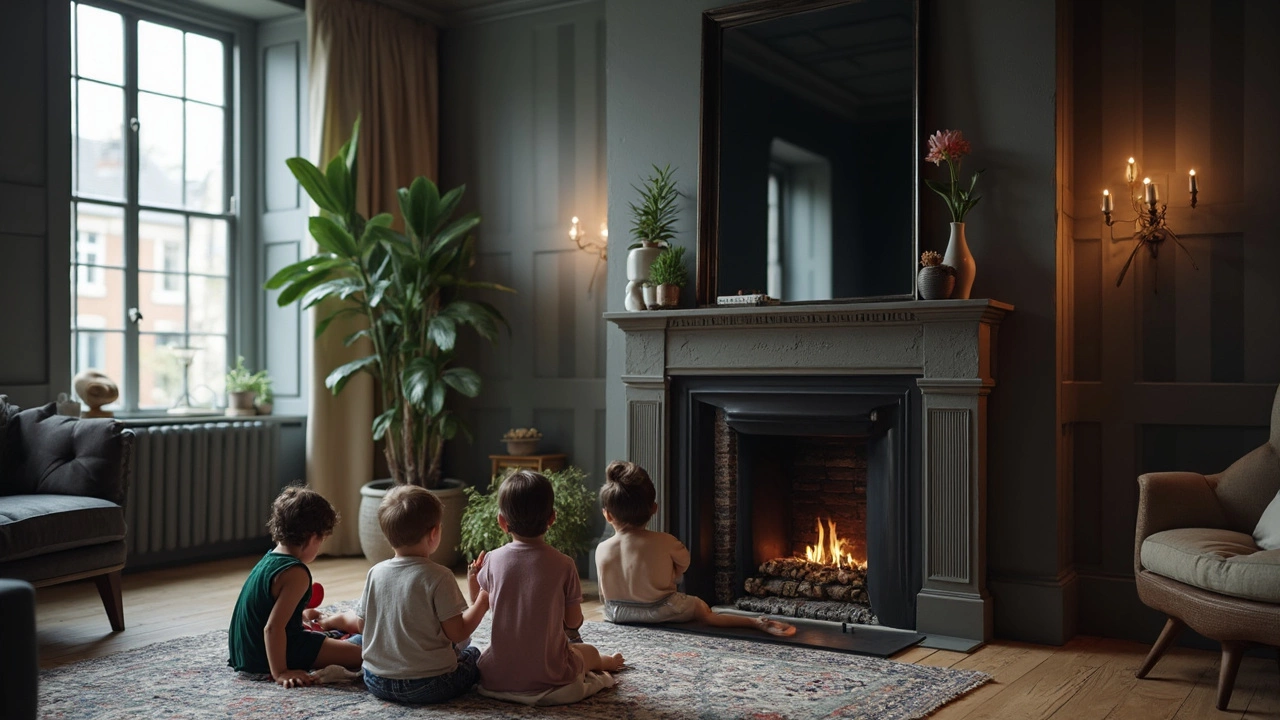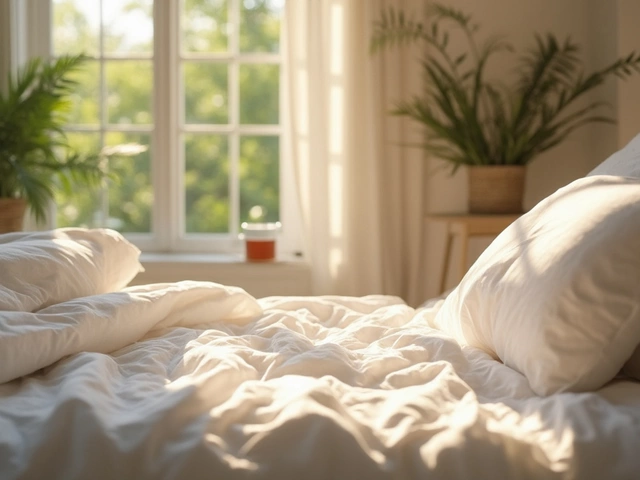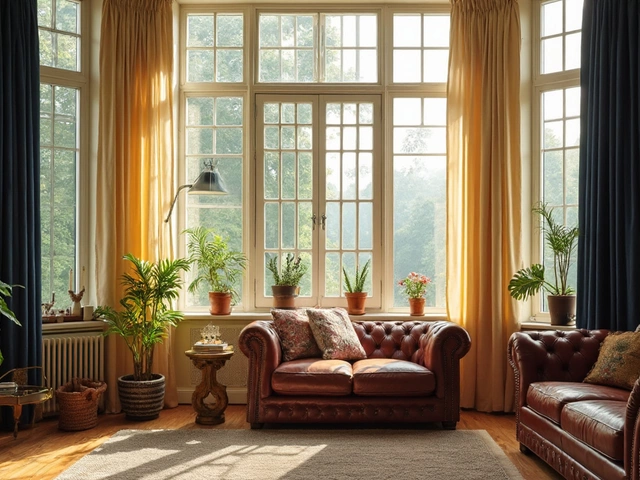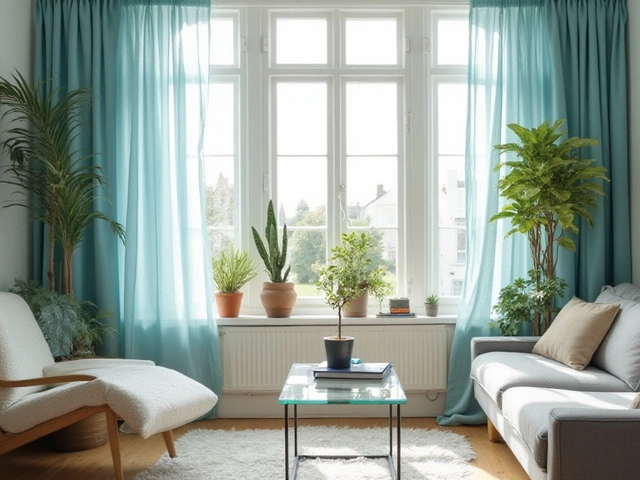Black Mirror: What the Heck Is This Type of Mirror, Anyway?

If you’ve only heard about black mirrors from that popular Netflix show, get ready for a twist—there’s an actual object called a black mirror, and it’s been around much longer than streaming TV. Picture a mirror, but instead of being bright and silver, it’s made with dark glass that looks almost like a glossy pool of ink. It reflects things, but in a much moodier, softer way.
You might wonder why anyone would want a mirror so dark you can barely see your own face. Here’s the deal—artists, especially in the 18th and 19th centuries, used black mirrors (sometimes called “Claude glasses”) to study shapes, light, and contrast in a whole new way. The muted reflection made it easier to spot details and big shapes without getting distracted by color or glare. Even today, designers sometimes use black glass surfaces to give a dramatic, mysterious vibe to rooms.
- So, What Is a Black Mirror?
- The Strange History and Uses of Black Mirrors
- Black Mirrors in Modern Life
- Tips for Finding or Creating Your Own
So, What Is a Black Mirror?
A black mirror is about as simple as it sounds: it’s a flat surface, usually made of dark-tinted glass or even polished obsidian stone, that’s used for reflection. What sets it apart from a regular mirror is its deep black background. When you look into it, the world looks darker and more muted. This makes the details pop but without the color and brightness you’d see in a regular mirror.
Historically, the most common type of black mirror was called a "Claude glass." It was basically a small, dark, slightly convex (curved outward) mirror. Artists loved them because, when you looked into a Claude glass, the landscape around you appeared with softer outlines and less distraction from color. It helped them focus on structure, shadow, and light—think of it like an old-school Instagram filter for painters.
Here’s what you’ll usually find with a black mirror:
- The “glass” is either actual glass that’s painted or coated on the back, or sometimes shiny black stones like obsidian. Both work, as long as the surface is smooth and dark.
- They come in all shapes—oval and round are popular, but you can find rectangular ones too.
- The reflection is always dim and kind of smoky, but it’s enough that you can still make out shapes and movement.
Today, when people talk about black mirrors, they usually mean one of three things: a Claude glass for art, a tool for mystical practices (some folks use them for scrying or "seeing visions"), or a design accent in a modern home or office. For the last group, you’ll even see black glass used on furniture or as a backsplash in trendy kitchens.
This little table gives you a quick side-by-side with other mirror types:
| Type | Main Material | Reflection Quality | Common Use |
|---|---|---|---|
| Black Mirror | Black glass or obsidian | Dark, muted | Art, design, mystical |
| Standard Mirror | Clear glass with silver backing | Bright, crisp | Everyday use |
| Tinted Mirror | Tinted glass | Colored, less bright | Decor, privacy |
So, a black mirror is just what it sounds like—a mirror that shows things in shades of black and gray instead of the full-color blast most of us are used to. It’s less about vanity, more about seeing the world in a totally different way.
The Strange History and Uses of Black Mirrors
Before anyone started calling their smartphone a black mirror, artists and curious folks used the real thing for all kinds of reasons. One of the oldest uses dates back to the 18th century, when landscape painters carried a little pocket-sized dark mirror called a Claude glass. These weren’t for checking your hair; they helped artists study scenery with less detail and softer colors, making it easier to spot the main shapes and get better compositions for their paintings.
It wasn’t just a painter’s trick. Some fortune tellers, especially in Victorian times, loved the mysterious vibe of black mirrors for scrying (kind of like crystal-ball gazing, but moodier). They believed the deep black glass made it easier to see visions or “other worlds,” probably because your own reflection just about disappears in the darkness.
There’s a fun fact about how widely these mirrors showed up. A lot of 19th-century travelers carried them to get a fresh look at famous views. Looking at a mountain or a castle through a black mirror changed how everything looked—clouds puffed up, shadows deepened, and the landscape took on this kind of old-timey, painted look. Some travel guides from that time even suggested setting up a picnic while gazing at the world through a black mirror. Sounds Instagram-worthy, doesn’t it?
Here’s what John Gage, an art historian who studied these mirrors, said:
"For painters and poets alike, the Claude glass offered a portable window into an idealized landscape, stripping away distraction and heightening the dramatic."
Of course, these mirrors weren’t always treated like designer tools. Some cultures linked black mirrors to superstitions or rituals. In Mexico, obsidian mirrors were used by Aztec priests for both art and divination. Even today, you’ll spot black glass in certain meditation or spiritual tools. So while they’ve evolved a bit, they never really disappeared.
| Historical Use | Main Purpose |
|---|---|
| Claude glass (18th-century Europe) | Simplifying landscapes for paintings |
| Victorian scrying | Fortune telling and mystical visions |
| Aztec obsidian mirrors | Rituals and self-reflection |
These days, when you see a black mirror, just remember: it’s much more than a cool design trend. It’s a tool with a weird, colorful past used by artists, travelers, and even fortune tellers looking for something beyond the ordinary.

Black Mirrors in Modern Life
The weird thing is, black mirror surfaces are actually all over your daily life, whether you realize it or not. Ever looked at your phone or laptop when it’s turned off? That glossy, jet-black reflection looking back at you is basically a modern black mirror—just made with today’s tech instead of old-school black glass.
Designers are now bringing real black mirror panels into homes, stores, and restaurants. Interior designers love using black glass on walls, as tabletops, or even for cabinet doors because it makes spaces look sleek and a little mysterious. Unlike regular mirrors, these dark surfaces don’t bounce light everywhere. Instead, they create subtle reflections that give rooms more depth. People even use them to make small spaces feel bigger without feeling too harsh or shiny.
Artists also still use black mirrors in their studios. These mirrors can help them study light and shadow on a subject in a really stripped-down, focused way—kind of like using a filter on your phone camera, but for real life. Some photographers use black mirrors under objects or people to create dramatic portraits with strong mood and cool reflections.
And in some wellness trends, black mirrors pop up as meditation tools. Some folks believe staring into a black mirror helps with self-reflection, mindfulness, or even sparking creativity. There’s no solid science backing those claims, but it’s catching on in some circles.
Here are a few common modern uses for black mirrors:
- Decorative wall panels in upscale hotels and trendy apartments
- Art installations in museums and galleries
- Tabletops or shelving for a bold, moody statement
- Photography studios, for creative reflection effects
- Personal meditation spaces
Need a sense of how popular black glass surfaces are getting? Bigger furniture stores and custom glass workshops say orders for black glass items jumped by around 15% in the past two years. People want the drama of reflection, but with an edge.
Tips for Finding or Creating Your Own
So, you want a black mirror for yourself? Good news—it’s not that hard, and you’ve got options. Whether you’re into hunting down authentic old pieces or just want a quick DIY project, there’s a way for everyone.
If you’re looking to buy, start by checking antique shops, especially those that focus on art supplies or quirky oddities. Sometimes, sellers list black mirrors online, usually calling them "Claude glasses" or even “artist’s mirrors.” These might not be cheap though—authentic ones from the 1800s can run a few hundred dollars or more.
But seriously, why spend big money if you can make your own in an afternoon? Here’s a super simple way to create your own black mirror at home:
- Get a small picture frame with glass—it can be any size, but 4x6 inches works great for holding in your hand.
- Remove the backing and clean the glass until it’s spotless.
- Use spray paint (regular black spray paint works fine) and coat one side of the glass. Three light layers is usually plenty. Let it dry between coats.
- Once dry, put the glass back into the frame so the painted side faces the back. The front will look shiny and dark just like a real black mirror.
Want something even easier? Some people use a black tablet or phone screen that’s turned off as a makeshift black mirror. It’s not exactly traditional, but it gives you a similar effect—especially handy when you’re out and about and want to study light or reflections.
Here’s a quick look at the differences between real vintage mirrors, DIY, and using digital screens:
| Type | Cost | How Authentic? | Where to Find |
|---|---|---|---|
| Vintage Black Mirror | High ($100+) | Totally authentic | Antique shops, online auctions |
| DIY Black Mirror | Low (under $20) | Looks and works like the real deal | Make at home with frame + paint |
| Digital Device Screen | Free if you already have one | Not historical, but similar effect | Your own phone or tablet |
If you’re using your black mirror for art, keep it handy while sketching landscapes or testing lighting ideas. For home decor, look for larger black glass panels—they’re trending now in interiors, giving everything a bit of a mysterious vibe. Try different lighting and angles, because the best part about a black mirror is how it changes based on what’s around it!





